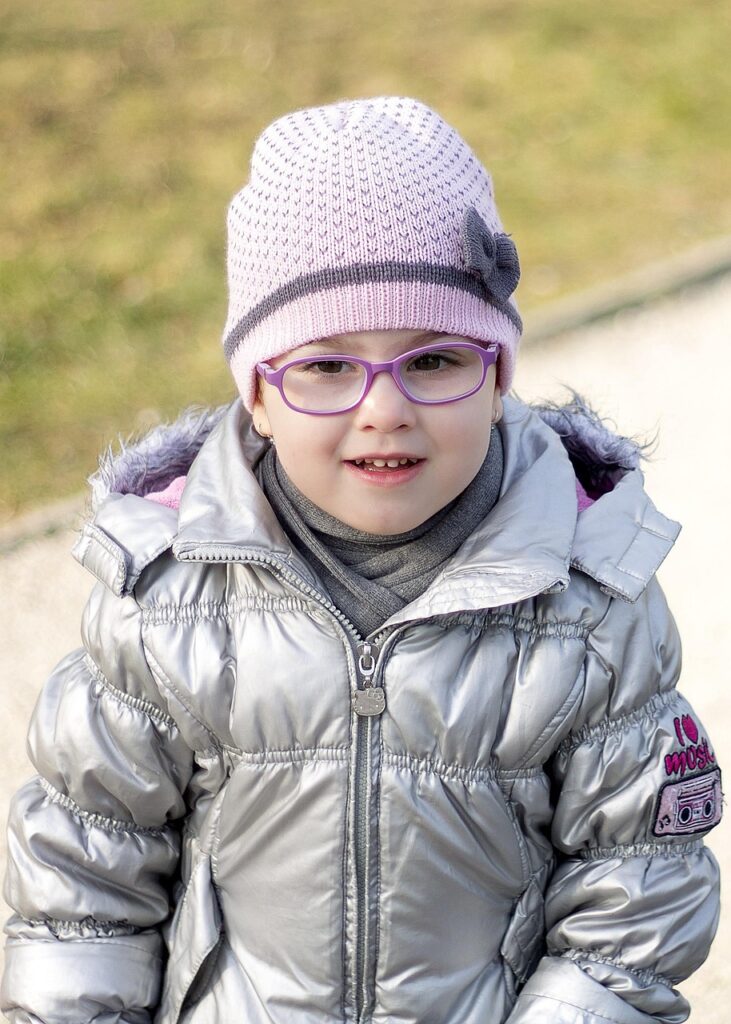
Undetected vision problems can have a significant impact on your child’s ability to thrive both in and out of the classroom. From reading the board at school to enjoying playtime with friends, healthy vision is a vital part of your child’s development. That’s why it’s so important for parents to understand the basics of eye health and be able to recognize the signs that their child may need glasses.
“The visual system in a child is still developing during the first seven to eight years of life. In some cases, glasses may be necessary to help normal visual development,” explains Dr. Megan Collins, a pediatric ophthalmologist at Johns Hopkins.
Why Children Wear Eyeglasses
Children may need glasses for a variety of medical and developmental reasons. According to Dr. Collins, the most common reasons include:
- Improving blurry vision due to refractive errors like nearsightedness (myopia), farsightedness (hyperopia), or astigmatism.
- Strengthening a weak or amblyopic eye (commonly known as “lazy eye”) to ensure both eyes develop properly.
- Correcting crossed or misaligned eyes, also known as strabismus, to help the eyes work together.
- Protecting vision in one eye if the other has poor vision or damage.
These issues, if left untreated, can result in long-term visual impairment or delayed learning and development.
Common Signs Your Child Might Need Glasses
Children don’t always know how to communicate when something is wrong with their vision, especially if it’s been that way since birth. Here are some clear warning signs parents should look out for:
👀 1. Squinting
If your child frequently squints when looking at distant objects, it could be a sign of a refractive error. Squinting helps temporarily sharpen images but may indicate that the eyes are struggling to focus properly.
📱 2. Sitting Too Close to Screens
Kids with nearsightedness may move closer to the television, tablets, or books to see clearly. If your child consistently sits very close or lowers their head to read, it may be time for an eye exam.
🤕 3. Complaining of Headaches or Eye Pain
Straining to see clearly can lead to frequent headaches or eye discomfort, particularly at the end of the day. If your child complains of these symptoms regularly, don’t ignore them.
🤨 4. Tilting Head or Covering One Eye
Your child may tilt their head or cover one eye to compensate for vision loss or misalignment in one eye. This can be a sign of lazy eye or strabismus.
😣 5. Rubbing Eyes Excessively
Eye rubbing can indicate eye fatigue, strain, or even allergies. While occasional rubbing is normal, excessive rubbing should prompt a closer look at their vision.
📚 6. Difficulty Concentrating on School Work
Children need to shift their focus between the whiteboard, textbooks, and screens throughout the school day. If your child is losing focus, avoiding reading, or struggling with academic tasks, vision problems could be the cause.
🤸♂️ 7. Clumsiness or Bumping into Objects
If your child seems more uncoordinated than usual or frequently bumps into things, it may not be just a phase—it could be related to poor depth perception or peripheral vision.
What to Do If Your Child Fails a Vision Screening
Vision screenings are usually conducted by schools or pediatricians. While helpful, these screenings only catch the most obvious problems. If your child fails one, don’t panic—but don’t wait either.
“If your child fails a vision screening, the most important thing to do is be seen by an eye care provider for a comprehensive eye exam,” says Dr. Collins.
A full exam by an optometrist or ophthalmologist will check:
- Visual acuity (sharpness and clarity of sight)
- Eye alignment and muscle coordination
- Depth perception
- Internal and external eye health
- Signs of more serious eye conditions
Ongoing Eye Care: Why Annual Checkups Matter
Even if your child already wears glasses, their vision can change rapidly as they grow. That’s why it’s essential to schedule annual eye exams to monitor their development and ensure their prescription stays accurate.
Glasses not only improve your child’s ability to see—they can also help improve confidence, school performance, and behavior.
Supporting Your Child Through the Process
Wearing glasses can feel like a big change, especially for younger kids. Help them feel more confident by:
- Letting them choose their own fun, stylish frames
- Showing them photos of celebrities and characters who wear glasses
- Encouraging compliments from friends and family
- Explaining how glasses help them do better in school and play
Final Thoughts
Vision is one of the most critical senses your child uses every day. Many learning and behavioral challenges stem from undiagnosed vision problems. By staying alert to the signs and scheduling regular eye exams, you can help your child see—and succeed—better.
Don’t wait until there’s a problem. Early detection is key.

